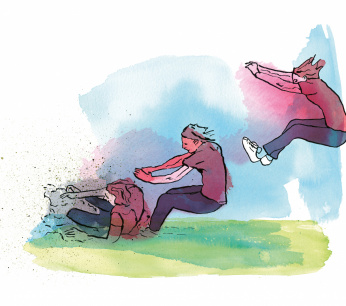Older staff are more likely to sit at home for long periods
More and more older employees in primary education are sitting at home because of long-term illness or unemployment. This is evident from the latest analysis by the Labor Market Platform PO.

Picture: Type tank
The number of WIA benefits, for people who have been ill for two years or more, has increased by 2014 percent in primary education since 37 to 5.400 employees in 2018. The majority of these are 55 years or older.
This also applies to unemployment benefits. Although the total number of new unemployment benefits has fallen sharply (from 8.800 in 2014 to 2.800 in 2019), proportionally older teaching staff in particular find themselves at home without work. While in 2014 only 18 percent of new unemployment benefits were granted to older employees, in 2019 this had risen to more than 41 percent. They generally also make use of this benefit for a relatively long time.
High working pressure
It has not been investigated why older staff in particular are left at home. However, the link with the high workload is obvious. No less than 72 percent again indicated in the analysis that they experienced (very) much work pressure. Despite the fact that teachers are generally satisfied with the content of their job, there is a struggle more than a quarter with burnout complaints. That is well above the national average of 17 percent.
Absenteeism is also increasing among educational support staff
According to the platform, absenteeism among teachers has risen again this year and is 6,9 percent in primary education and no less than 8,3 percent in special education. This is also significantly more than the national average of 5,2 percent this year. Here too, absenteeism among older teachers is much higher than among their younger colleagues. By way of comparison, absenteeism among teachers under the age of 25 is less than 3 percent in both primary and special education, while this is 65 percent (primary education) and 12 percent (special education) among the over 14s.
Absenteeism is also increasing among educational support staff. In primary education, just like among teachers, it is 6,9 percent. The support staff in special education have the highest absenteeism percentage of all employees in primary education: 8,5 percent in 2020.
Shortages are increasing
According to the Labor Market Platform PO, the higher absenteeism among older people should become a point of attention in the discussions about sustainable employability. According to the platform, how can it be ensured that staff can work healthy, motivated, with pleasure and competently throughout their career?
The shortage of teachers in primary education will amount to more than 2024 full-time jobs in 1900
Certainly given the number of shortages that the platform also sees increasing. Although registrations for teacher training courses and side entry courses are increasing considerably, that is nowhere near enough to fill all vacancies. The shortage of teachers in primary education is expected to reach more than 2024 full-time jobs by 1900. This is on top of the current shortages. Especially in the Randstad and in disadvantaged schools, more vacancies will not be filled.
Vacancies for educational support staff are also increasing sharply, the labor market platform points out in its annual analysis. The number of educational supporters in primary schools has increased by more than 30 percent in recent years to about 40.000 in 2019. According to the platform, this is probably related to the use of workload resources. Many schools use that budget to hire support staff. It should be noted that this usually concerns temporary contracts.
Intervention necessary
De AOb sees the high absenteeism among older staff as yet another confirmation that action is necessary. “The workload has been too high for years and is only increasing, so in that sense it is no surprise that people drop out,” says AObVice-chairman Jelmer Evers. “Given the increasing shortages in education, we desperately need every teacher. It is really time that we make working in education more attractive, through smaller classes and a reduction in the workload. All signals have been red for a long time, when is it enough? ”
Read here the entire labor market analysis PO.
The absenteeism rate among teachers in the secondary education remained the same in 2019. But the flag cannot be lifted. One in ten teachers is currently at home because of corona.


